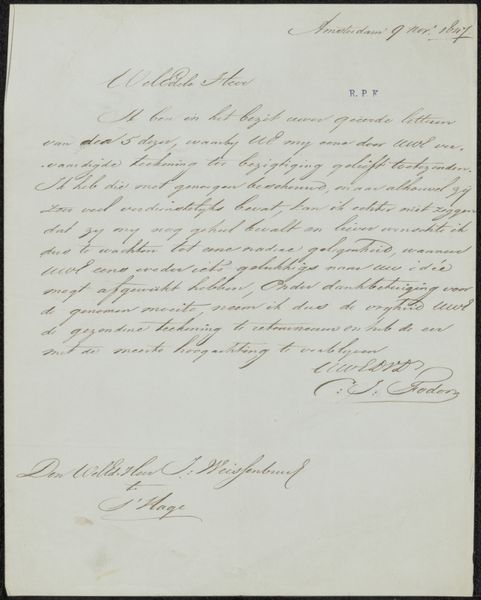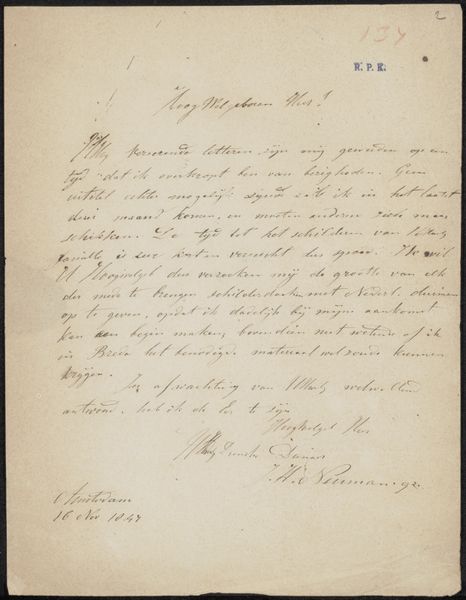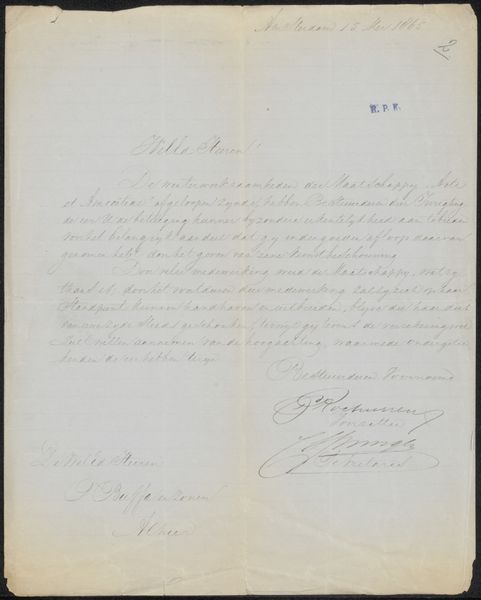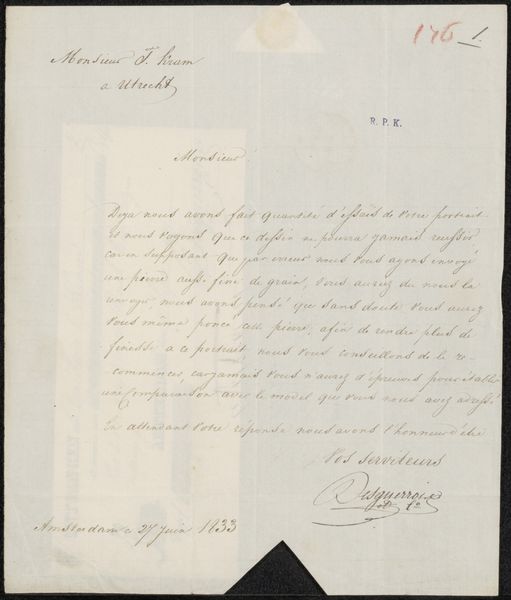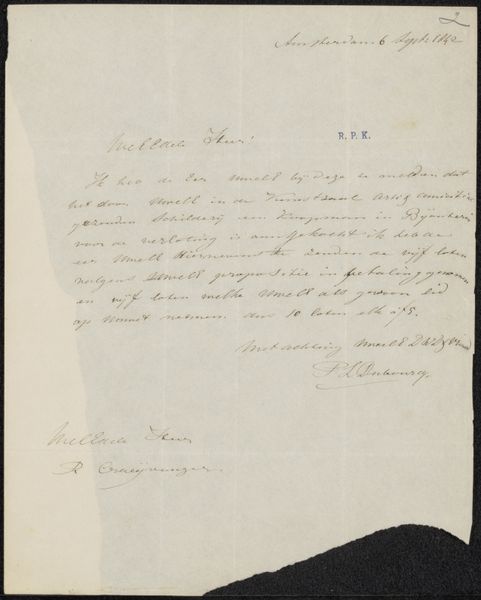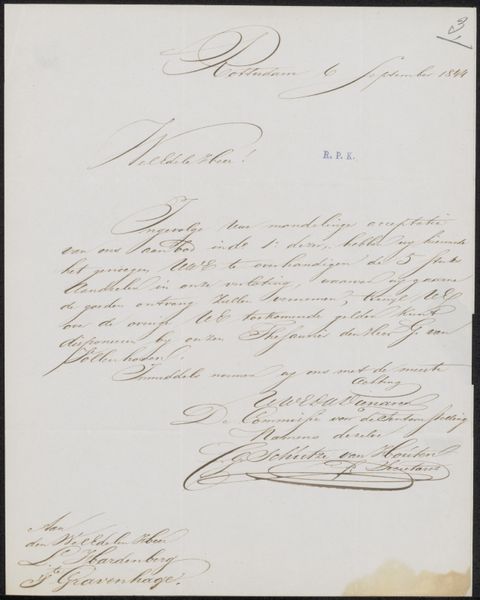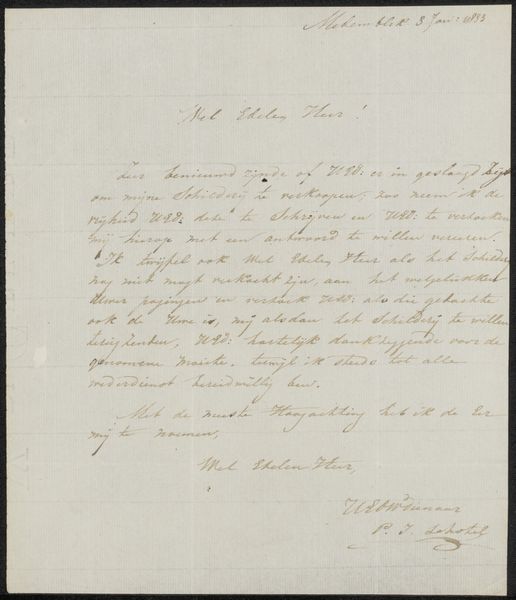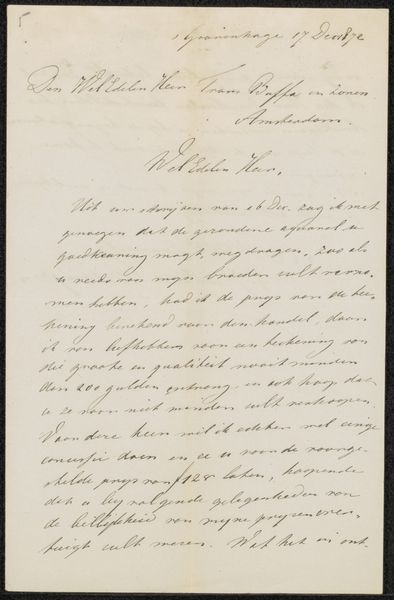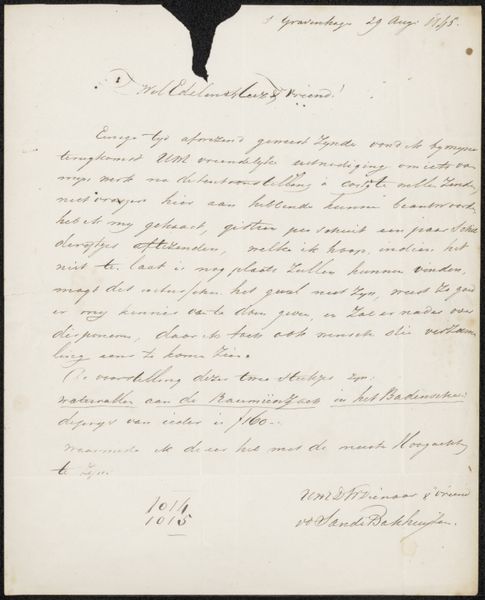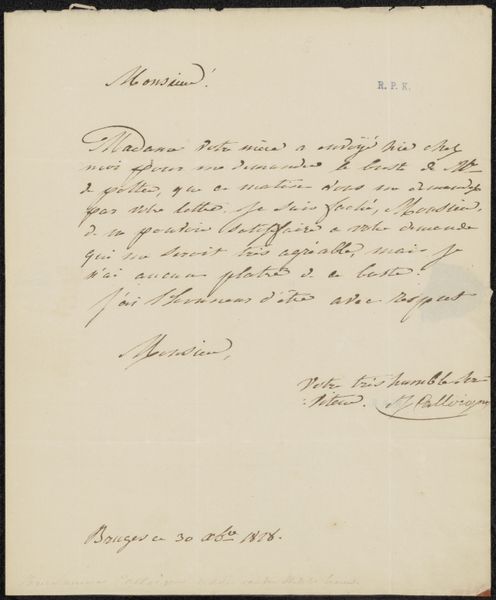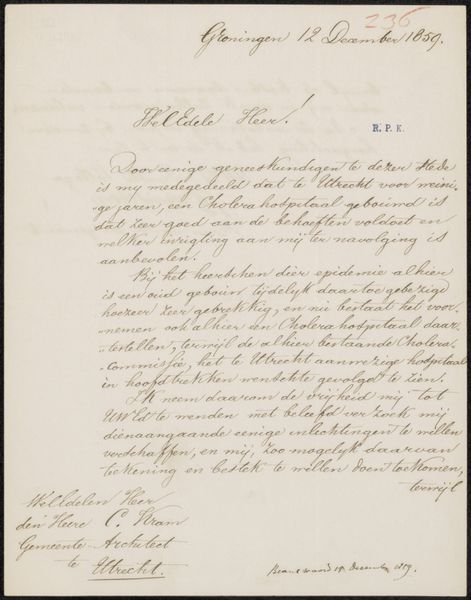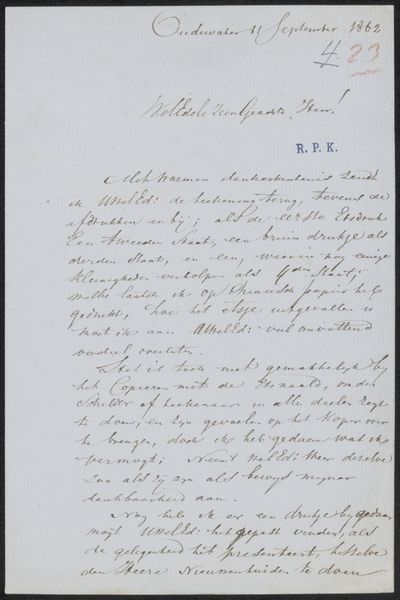
Brief aan de Commissie van de Tentoonstelling van Levende Meesters in Utrecht Possibly 1843 - 1844
0:00
0:00
drawing, paper, ink
#
drawing
#
paper
#
ink
#
romanticism
#
academic-art
#
calligraphy
Copyright: Rijks Museum: Open Domain
Curator: Here we have "Brief aan de Commissie van de Tentoonstelling van Levende Meesters in Utrecht," which roughly translates to "Letter to the Committee of the Exhibition of Living Masters in Utrecht," believed to be from around 1843 or 1844, by Salomon Leonardus Verveer. It's an ink drawing on paper. Editor: It looks official, but also somehow fragile. I'm immediately struck by the formal script and the age of the paper. It seems very personal, but simultaneously distanced through bureaucratic language. Curator: Exactly. Verveer was petitioning for his paintings to be considered and displayed at an exhibition. What’s fascinating is thinking about the labor involved – the physical act of writing with a quill, the specific inks available, the quality of the paper stock. This object allows us to consider how artists navigated the socio-economic structures of their time. Editor: And the power dynamics. The committee held significant sway over an artist's career trajectory, their visibility, and potential sales. Think about what it meant to have one’s work validated by institutions largely dominated by elite males during this period. It raises crucial questions about access, representation, and who gets to decide what constitutes “art.” Curator: And the Romantic movement certainly informed his plea here. Academic Art of the period heavily influences presentation, neatness and an emphasis on his abilities to fit in is all paramount for the committee's consideration of his works. This letter becomes an object lesson, it literally shows Verveer's mastery over the artistic process. Editor: It’s more than just technique, though. His plea is about livelihoods and reputation—critical concerns. Verveer wasn’t just dealing with aesthetics, he was trying to succeed within a complex social hierarchy and market system. And this letter provides tangible evidence of that struggle, blurring boundaries between personal expression and economic necessity. Curator: Agreed. Examining this letter compels us to question the hierarchies in place and appreciate Verveer’s attempts to secure space and perhaps artistic recognition for himself in a quickly changing and unforgiving art landscape. Editor: Indeed, recognizing the political, and social, forces at play enriches our understanding and, frankly, gives more dimension and deeper appreciation for artistic creativity born within very stringent requirements.
Comments
No comments
Be the first to comment and join the conversation on the ultimate creative platform.
